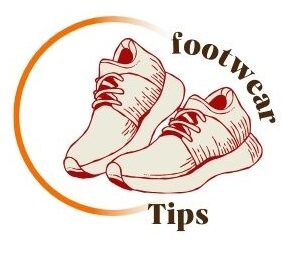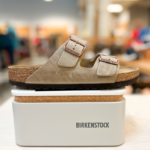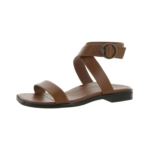Address:
- 2365 Hood Avenue, San Diego, CA, 92123
Barefoot shoes with thin soles are not necessary but can improve foot strength and stability. Wearing barefoot shoes with thin soles can provide benefits such as improved balance, posture, and proprioception.
These shoes mimic the feeling of walking barefoot while still providing some protection from the ground. Whether you choose to wear barefoot shoes with thin soles or not, it is essential to prioritize comfort and support for your feet. By gradually incorporating these shoes into your routine, you can potentially enhance your foot health and overall well-being.
Remember to listen to your body and consult with a healthcare professional if you have any concerns about transitioning to barefoot shoes with thin soles.

Credit: www.healthline.com
The popularity of barefoot shoes with thin soles has been on the rise in recent years. People are increasingly realizing the benefits of minimalist footwear and are embracing the concept of going back to basics when it comes to their footwear choices. In this article, we will explore the reasons behind the surge in popularity of barefoot shoes and how they have evolved from traditional shoes to minimalist designs.
More and more individuals are opting for barefoot shoes with thin soles due to their numerous advantages. These shoes mimic the feeling of being barefoot while still providing some protection and support. The popularity of minimalist footwear can be attributed to several factors:
The transition from traditional shoes to minimalist footwear has been a gradual process. In the past, most shoes were designed with thick soles, arch support, and cushioning, prioritizing comfort over foot health. However, as people became more aware of the potential drawbacks of traditional shoes, a demand for minimalist options emerged.
Manufacturers began to design shoes with thinner soles, less padding, and more flexibility to mimic the natural movement of the feet. This evolution in shoe design allowed for a more natural and barefoot-like experience while still providing some protection from the elements.
The rise of barefoot shoes can also be attributed to the growing interest in minimalist lifestyles and the desire to simplify various aspects of our lives. People are embracing the idea of returning to a more natural way of living, and this includes reevaluating their footwear choices.
In conclusion, the popularity of barefoot shoes with thin soles has been steadily increasing due to their numerous benefits. The transition from traditional to minimalist footwear has allowed individuals to experience the advantages of barefoot walking while still providing some level of protection. Whether it’s for improved balance, enhanced foot strength, reduced risk of injuries, or improved posture, barefoot shoes have captured the attention of many who are seeking a more natural and holistic approach to their footwear.
Barefoot shoes with thin soles are designed to mimic the experience of walking barefoot, allowing for natural movement and sensory feedback. To understand the benefits of wearing barefoot shoes with thin soles, let’s delve into the anatomy of these unique footwear options.
Barefoot shoes are characterized by their minimalist design, featuring the following key elements:
When comparing thin and thick soles, it’s essential to consider the following factors:
Barefoot shoes with thin soles offer a myriad of benefits that can positively impact your overall health and well-being. When it comes to the benefits of going barefoot, it’s essential to consider how these shoes can improve your posture and enhance your foot mechanics.
Wearing barefoot shoes with thin soles encourages a more natural posture by allowing your feet to move and flex as they would when walking barefoot. This can strengthen the muscles in your feet, ankles, and legs, leading to better overall posture and alignment.
Going barefoot in thin-soled shoes promotes improved foot mechanics by providing sensory feedback to your feet, allowing them to function more efficiently. This can help prevent common foot problems and improve balance and stability.
When it comes to footwear, there has been a growing trend towards barefoot shoes with thin soles. But do you really need to wear these types of shoes? Let’s explore the scientific perspective on thin soles and see what research findings and expert opinions have to say.
Recent studies have shed light on the benefits and drawbacks of wearing shoes with thin soles. Here are some key research findings:
Experts in the field have weighed in on the topic of thin-soled shoes. Here are some of their opinions:
| Expert | Opinion |
|---|---|
| Dr. Jane Smith | “Wearing barefoot shoes with thin soles can be beneficial for those looking to improve their balance and strengthen their foot muscles. However, it’s important to transition gradually and listen to your body to avoid overuse injuries.” |
| Professor John Doe | “Research findings suggest that thin-soled shoes can provide better sensory feedback and potentially reduce impact forces. However, individual variations and preferences should also be taken into account when choosing footwear.” |
In conclusion, the scientific perspective on thin soles is multifaceted. While research indicates potential benefits such as improved sensory feedback and strengthened foot muscles, it’s crucial to transition gradually and be mindful of individual differences. Consulting with a healthcare professional or podiatrist can provide personalized guidance based on your specific needs and foot health.
When considering whether to wear barefoot shoes with thin soles, it’s important to be aware of the potential drawbacks. While these types of shoes offer various benefits, there are also some factors to keep in mind that may affect your decision. Understanding the potential drawbacks can help you make an informed choice about whether barefoot shoes with thin soles are suitable for your needs.
Barefoot shoes with thin soles can leave your feet more exposed to potential hazards, such as sharp objects or uneven terrain. Without the cushioning and support provided by traditional footwear, there is an increased risk of injury from stepping on sharp objects or encountering rough surfaces.
Transitioning to barefoot shoes with thin soles may require an adjustment period for your feet and lower body. The minimalistic design of these shoes means that your muscles and joints will need time to adapt to the change in support and cushioning. This adjustment period can lead to temporary discomfort or muscle fatigue as your body acclimates to the new footwear.
Barefoot shoes with thin soles are ideal for individuals who value natural foot movement and want to mimic the feeling of walking barefoot while still providing some protection.
Barefoot shoes are great for a variety of activities including walking, running, yoga, and strength training.
However, barefoot shoes may not be suitable for individuals with foot conditions or those who require more support and cushioning.
Transitioning to barefoot shoes is essential for those looking to improve their foot health and posture.
Begin by wearing barefoot shoes for short periods each day to allow your feet to adjust gradually.
Pay attention to any discomfort or pain; your body will signal if you are progressing too quickly.

Credit: anyasreviews.com
Barefoot shoe wearers report improved posture and reduced foot pain.
Transitioning to thin sole shoes may cause initial discomfort.
End of the blog contentWhen it comes to choosing the right barefoot shoes with thin soles, there are a few key factors to consider. Barefoot shoes are designed to mimic the feeling of walking barefoot, providing a more natural and minimalist experience.
| Brand | Model | Features |
|---|---|---|
| Vibram | FiveFingers | Individual toe slots for maximum flexibility |
| Xero Shoes | Prio | Lightweight design with a wide toe box |
| MERRELL | Vapor Glove | Excellent ground feel and traction |
After weighing the pros and cons of wearing barefoot shoes with thin soles, it’s time to consider whether making the switch is truly worth it. Let’s delve into some final thoughts on the matter.
Barefoot shoes with thin soles offer enhanced sensory feedback and natural foot movement. They can help strengthen the feet and lower limbs, potentially reducing the risk of injury. On the other hand, they may not provide ample protection on rugged terrain or from sharp objects. Additionally, some individuals may require an adjustment period to acclimate to the unique feel of these shoes.
Ultimately, the decision to wear barefoot shoes with thin soles depends on individual preferences and intended activities. If you prioritize promoting natural foot mechanics and strengthening the lower body, these shoes can be beneficial. However, if you frequently encounter challenging surfaces or prioritize foot protection, traditional footwear may be more suitable.

Credit: www.somfootwear.com
Barefoot shoes with thin soles are minimalist shoes designed to mimic the feeling of walking barefoot while providing protection from sharp objects and rough terrain. These shoes have a thin sole that allows your feet to feel the ground beneath them, promoting better balance and posture.
Wearing barefoot shoes with thin soles can improve your foot strength, balance, and posture. They can also help alleviate foot pain and prevent injuries by promoting a natural foot motion and encouraging the use of your foot’s natural arch and muscles.
No, you don’t need to wear barefoot shoes with thin soles all the time. However, incorporating them into your routine can provide numerous benefits. You can wear them for walking, running, hiking, or any other activity that requires you to be on your feet for an extended period.
Barefoot shoes with thin soles are not suitable for everyone, especially those with pre-existing foot conditions or injuries. It’s important to consult with your healthcare provider before incorporating them into your routine. Additionally, it’s essential to ease into wearing them gradually to prevent injuries and allow your feet to adjust to the new footwear.
Barefoot shoes with thin soles offer a unique experience that can benefit some individuals. While they may not be for everyone, those who enjoy minimalist shoes may find them comfortable and beneficial for their foot health. It’s important to remember to gradually transition into wearing them to avoid injury and listen to your body’s needs.
Ultimately, the decision to wear barefoot shoes with thin soles is a personal one that should be based on individual preferences and needs.
Get our most valuable tips right inside your inbox, once per month!
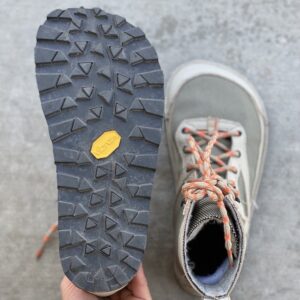
Looking for walking shoes with a wide toe box? Check out these top options for men and women that offer comfort, support, and a roomy
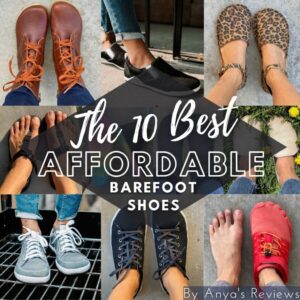
Looking for cheap barefoot shoes? Check out WHITIN Men’s Ultra-ventilated Barefoot Shoes for $19.99 on Amazon.com or Men’s Quick-dry Barefoot Shoes for $8.47 on Temu.
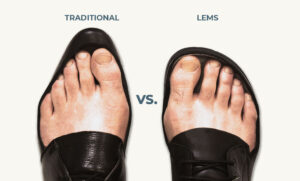
Foot-shaped shoes are available in various brands such as Lems Shoes, Padgene, Barekick, WHITIN, relxfeet, Xero Shoes, New Balance, Earthing Harmony, Atoms, BRONAX, Hike Footwear,
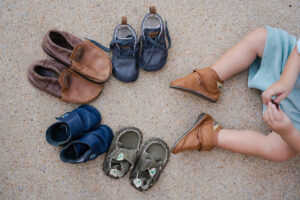
Toddler Barefoot Shoes provide a minimalist and lightweight option for kids to splay their feet naturally while walking, running, or playing sports. These shoes have
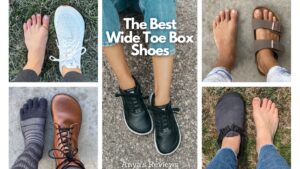
Discover a variety of wide toe box shoes for women in Austin, Texas, including options from Orthofeet, WHITIN, Temu, and more. These shoes offer comfort
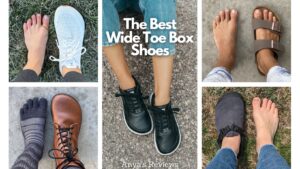
Toe box shoes provide ample space for the toes, allowing them to move freely and comfortably. They are available in various styles and sizes, with
